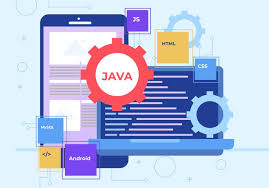info@gladsme.in
+91.8891968718
Introduction to Java Programming: A Comprehensive Guide for Beginners
Introduction to Java Programming: A Comprehensive Guide for Beginners

Java is one of the most popular programming languages in the world. It is widely used for building enterprise-scale applications, Android apps, and more. Whether you are a beginner or an experienced developer, understanding Java is essential. This blog post will provide a comprehensive guide to help you get started with Java programming.
What is Java?
Java is a high-level, class-based, object-oriented programming language that is designed to have as few implementation dependencies as possible. It was developed by Sun Microsystems (now owned by Oracle) and released in 1995. Java applications are typically compiled to bytecode that can run on any Java Virtual Machine (JVM) regardless of the underlying computer architecture.
Why Learn Java?
Platform Independence: Java code can run on any device that has a JVM installed, making it a versatile choice for cross-platform development.
Object-Oriented: Java's object-oriented approach enables modular, flexible, and extensible code.
Robust Community Support: With a large community of developers, there are countless resources, libraries, and frameworks available.
Job Opportunities: Java is a skill in high demand, opening doors to numerous career opportunities.
Setting Up Java Development Environment
To start programming in Java, you need to set up your development environment. Follow these steps:
Install JDK: Download and install the Java Development Kit (JDK) from the Oracle website.
Set Up IDE: Choose an Integrated Development Environment (IDE) like Eclipse, IntelliJ IDEA, or NetBeans. These IDEs provide tools and features to make Java development easier.
Configure Environment Variables: Ensure that your system's environment variables are set correctly to use the JDK.
Your First Java Program
Let's write a simple Java program that prints "Hello, World!" to the console.
java
Copy code
public class HelloWorld {
public static void main(String[] args) {
System.out.println("Hello, World!");
}
}
Create a New File: Open your IDE and create a new Java file named HelloWorld.java.
Write Code: Copy and paste the above code into your file.
Compile and Run: Compile the program by running javac HelloWorld.java in the terminal. Then, run the compiled program with java HelloWorld.
Understanding the Code
Class Declaration: public class HelloWorld declares a class named HelloWorld.
Main Method: public static void main(String[] args) is the entry point of the program. The main method is called when the program starts.
Print Statement: System.out.println("Hello, World!"); prints the text to the console.
Next Steps
Learn Java Syntax: Study the basic syntax, data types, operators, and control flow statements.
Object-Oriented Concepts: Understand the principles of object-oriented programming, including classes, objects, inheritance, polymorphism, and encapsulation.
Practice Coding: Solve problems on platforms like LeetCode, HackerRank, and CodeSignal to strengthen your skills.
Explore Java Libraries and Frameworks: Familiarize yourself with popular Java libraries and frameworks like Spring, Hibernate, and JavaFX.
Java is a powerful and versatile programming language that is essential for any developer. By following this guide, you have taken the first step towards becoming proficient in Java. Keep practicing and exploring to unlock the full potential of Java programming.
Related Blogs

The Importance of Data Structures in Software Development
Read More...
Exploring Machine Learning Algorithms: A Beginner's Guide
Read More...
The Evolution of Programming Languages: From Assembly to Rust
Read More...
Understanding Big O Notation: A Guide for Developers
Read More...Subscribe for our Newsletter
Subscribe to elevate your software game! Stay updated on the latest trends, coding insights, and exclusive promotions with our newsletter.
